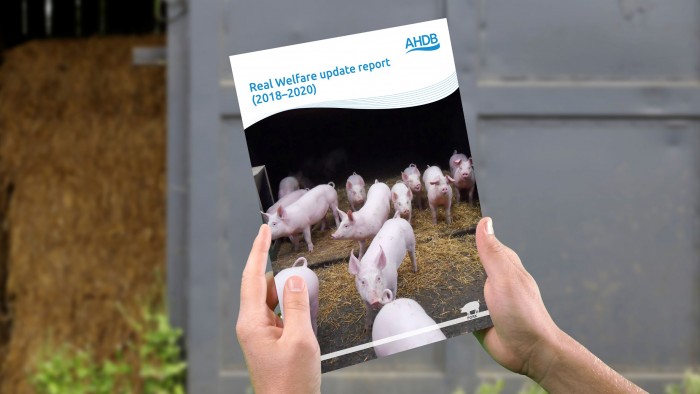The vast majority of pig farms are either addressing welfare issues or already have them under control, according to the latest report on AHDB’s Real Welfare Scheme.
Last year’s data shows that the vast majority of pig farms continue to have good levels of welfare and the sector as a whole shows continuous improvements are being made.
The data, published in a new report summarising the findings from 2018 to 2020, show that on average, all the welfare outcomes measured, bar one, have shown improvements since the scheme was introduced in 2013.
AHDB’s Real Welfare scheme is unique in the type of data it collects and the degree to which it represents practices across the industry. More than 13 million pigs have been individually assessed since 2013 by specially trained vets to provide this credible and benchmarked level of welfare, creating the biggest database of its kind anywhere in the world.
The key findings include:
- Hospital – only 0.05% of pigs needed hospitalisation, showing that the majority of farmers identify and provide appropriate care (for example, moving to a hospital pen) for affected pigs.
- Lameness – only 0.15% of pigs were lame, showing that either levels of lameness on farms are low or that the majority of farmers identify and provide appropriate care (for example, moving to a hospital pen) for affected pigs.
- Tail damage – 0.15% of pigs had severe tail damage and 72% of pigs had tails docked. While this figure compares favourably to other parts of the world where tail docking is permitted, the pig industry is seeking to reduce the need for tail docking, the report said.
- Body marks – only 0.18% of pigs had severe body marks, showing that farmers deal well with these pigs, and the overall level is low.
- Environmental enrichment – the average enrichment ratio per pen was 0.52, showing that the enrichment materials provided were only slightly preferred by pigs to pen mates and pen fittings, suggesting there is scope for improvement. For 1% of pigs, no enrichment was seen, showing that improvements must be made, to comply with legislation, the report said.
Dr Mandy Nevel, AHDB Head of Animal Health and Welfare, said: “This assessment of Real Welfare outcomes shows the scheme provides a positive impact, especially in providing good support to decrease lameness, severe body marks and improve hospital pen management.
“It also continues to build on the partnership between farmers and veterinary surgeons, providing an excellent basis from which to drive, and evidence, the British pig industry’s commitment and achievements in continuous improvement in pig welfare.”
Angela Christison, AHDB Sector Strategy Director (Pork), added: “These results show by acting in unison to continue to drive up standards, we can make real progress across the board.”
Real Welfare assessments are a requirement of Red Tractor and Quality Standard Meat farm assurance schemes. Through the scheme, vets routinely assess four welfare measures (see above) on pigs over 50kg. The fifth measure, environmental enrichment, is optional, although the type of enrichment found in pens must be recorded.
The update report for 2018–20 which can be downloaded HERE




